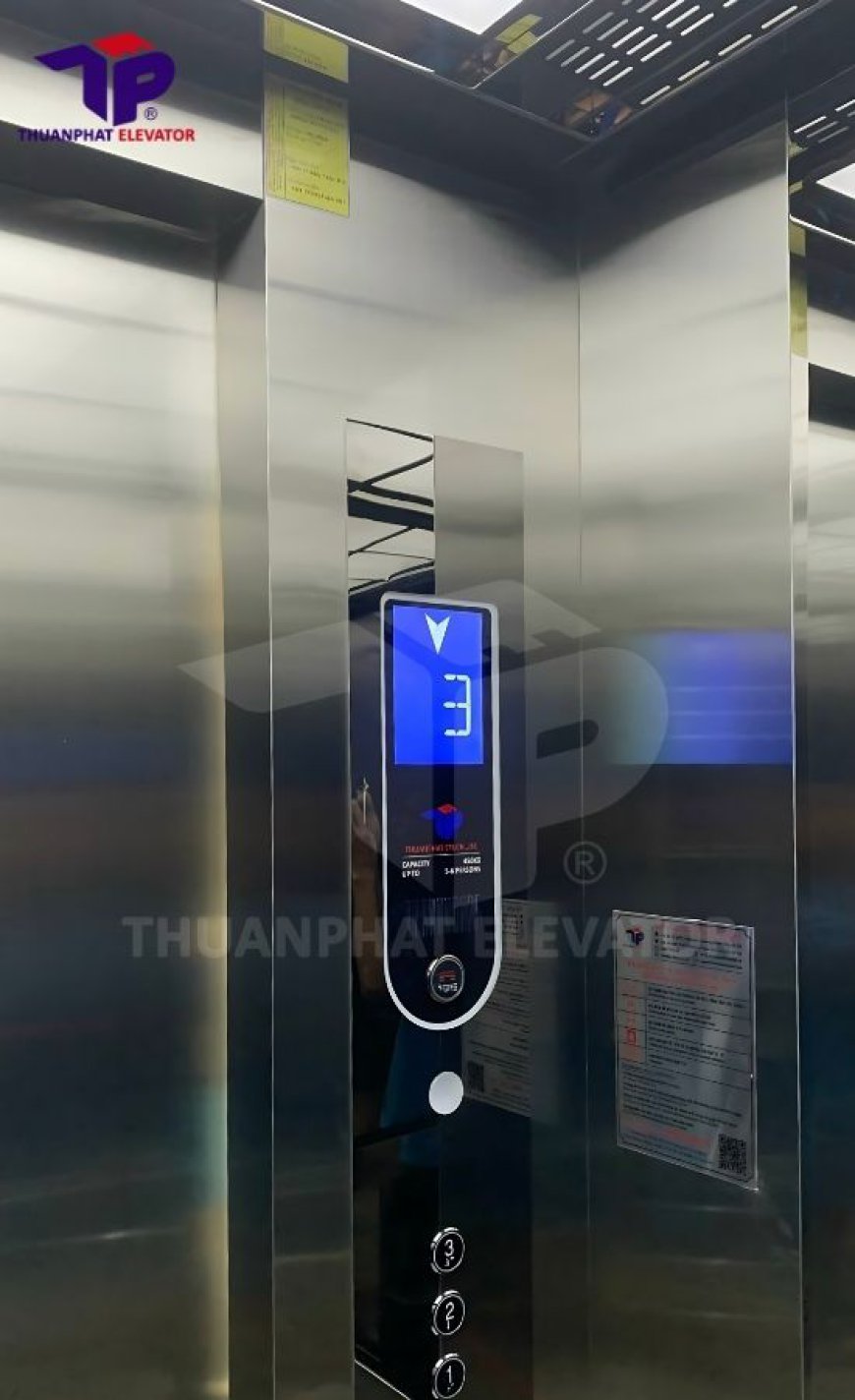Rest assured when using genuine elevators with elevator inspection stamps
Bài viết này của Thuận Phát sẽ cung cấp thông tin về tem kiểm định thang máy

Have you ever wondered why you need an elevator inspection stamp (tạm dịch: tem kiểm định thang máy) ? Or simply think that it is just an administrative procedure? In fact, elevator inspection stamps play an extremely important role in ensuring product quality as well as user safety. In this article, Thuan Phat will help you learn in detail about this powerful stamp, the inspection process and things to note.
What is an elevator inspection stamp?
An elevator inspection stamp is a type of stamp issued by a competent authority after the elevator has undergone an inspection process and met the prescribed safety standards. This stamp is affixed in a visible position in the elevator cabin, usually on the door or control panel.
The elevator inspection stamp includes important information such as:
Name of the inspection unit
Inspection date
Inspection expiration date
Serial number of the stamp
Elevator inspection stamps are like a “badge of honor” for elevators. It is not just a small piece of paper, but also a guarantee of safety and quality. Every time you step into an elevator and see the inspection stamp, you can be completely assured that you are using a device that has been thoroughly inspected and meets safety standards.
Requirements for elevator inspection stamps
The stamp must be designed according to the form of Appendix Id of Decree No. 44/2016/ND-CP of the Government. Any agency must comply with the following stamp model:
The standard stamp model is clearly and specifically specified in Appendix Id, ensuring consistency and synchronization during the inspection and use process. Relevant responsible agencies need to understand and comply with this regulation to ensure the legality and effectiveness of the implementation process.
Why is it necessary to inspect and affix inspection stamps to elevators?
Elevator inspection and affixing inspection stamps are mandatory according to the provisions of law to ensure safety for users. Specifically:
Ensuring safety
Elevators are complex equipment that operate regularly, so periodic inspections help detect potential damage and incidents early, thereby preventing unfortunate accidents from occurring. Inspection helps detect and fix technical errors, minimizing the risk of accidents.
Compliance with the law
Failure to inspect elevators is a violation of the law on labor safety. Authorities can impose administrative penalties or suspend elevator operations if they do not comply with regulations.
Enhance reputation
Inspection stamps help users recognize the safety status of elevators. For buildings and apartments, having elevators that meet safety standards will create a good impression with customers, partners and residents.
Avoid penalties
Facilities that do not conduct inspections and affix stamps may be fined or suspended from operation. If inspections are not conducted, investors, organizations and individuals using the equipment will be fined up to VND 75 million (Article 23, Decree 28/2020/ND-CP).
Elevator inspection period
According to Article 9 of Circular 12/2021/TT-BLDTBXH of the Ministry of Labor - Invalids and Social Affairs, elevators must be periodically inspected to ensure safety. Depending on the age and installation location, the inspection time will vary:
Elevators over 15 years old: Inspection once a year.
Elevators in public buildings: Inspection every 2 years. Elevators in other buildings: Inspection every 3 years.
Elevator inspection process
Based on Technical Procedure 12/2021/TT-BLDTBXH, the technical safety inspection process for electric elevators, including home elevators, is carried out in the following steps:
Document check: The inspection unit will review documents related to the elevator such as technical records, maintenance and repair history.
External inspection: Check the general condition of the elevator, including the cabin, doors, control system, and other parts.
No-load technical inspection: Conduct tests on load, speed, braking system, and other safety features.
Operation test: Check the operation of the elevator under different conditions.
Record and issue stamp: After the inspection is completed, if the elevator meets the standards, the inspection unit will make a record of acceptance and issue a stamp of inspection.
In addition, you can refer to the cost of elevator inspection through this article of Thuan Phat.
Conclusion
Elevator inspection stamps play an important role in ensuring safety for users. Compliance with inspection and labeling regulations is not only a legal responsibility but also an ethical responsibility of the owner and elevator management unit. Only when all parties have a sense of responsibility can we ensure absolute safety when using elevators in daily life. Hopefully, the above article by Thuan Phat has helped you better understand this powerful stamp of the elevator.

